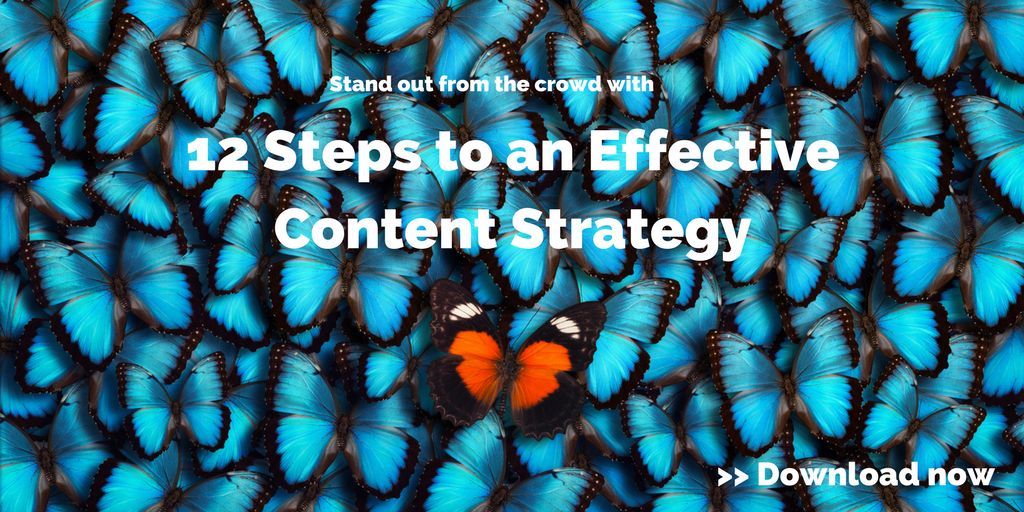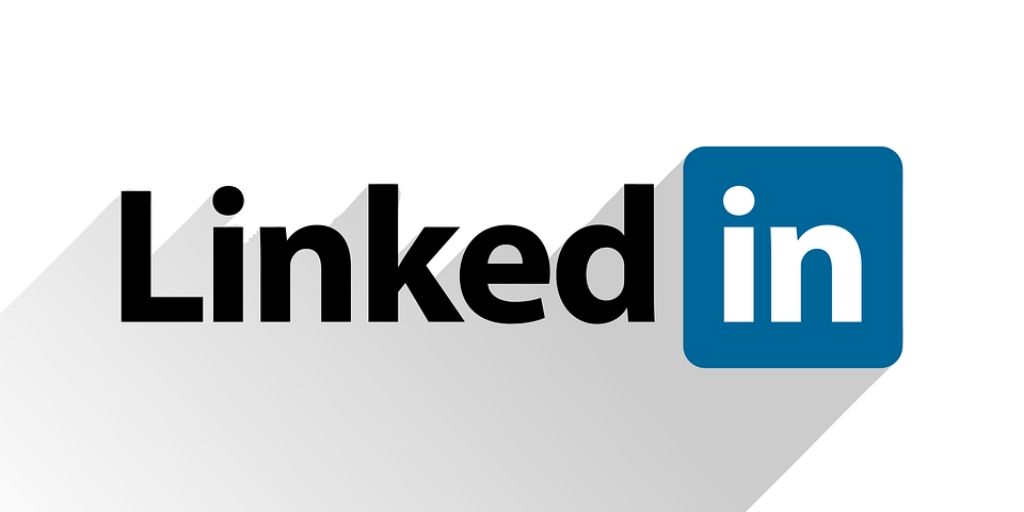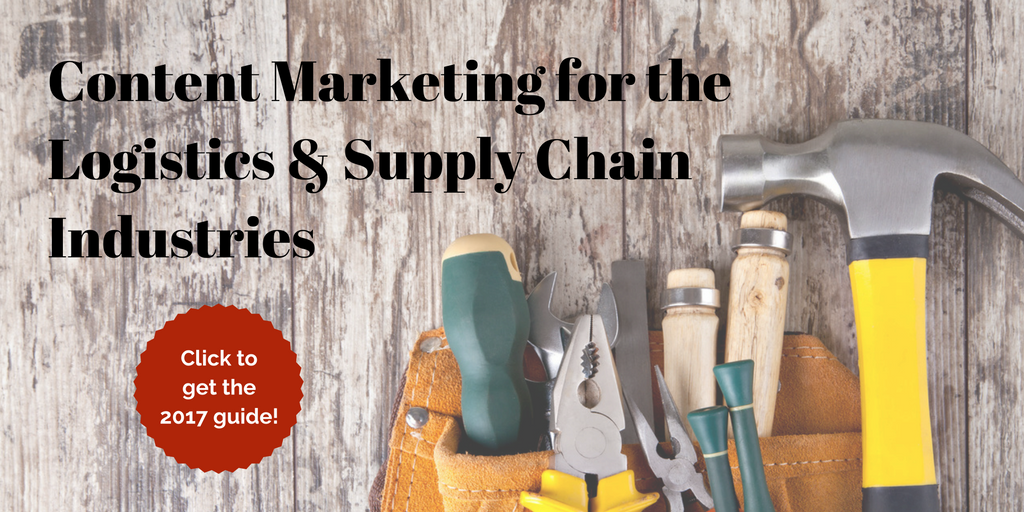
by Fronetics | Nov 19, 2019 | Blog, Logistics, Robotics & Automation, Supply Chain
Artificial intelligence is shaping the future of supply chain companies, helping to improve accuracy, speed, efficiency, and more. Here are 4 practical ways for supply chain companies to incorporate AI.
A recent Forbes article focused on how specific supply chain companies are making advances with artificial intelligence. And, with powerful stats like these, it’s easy to see why more and more companies are investing in AI:
- AI technology can enhance business productivity by up to 40%.
- 84% of global business organizations believe that AI will give them a competitive advantage.
- By 2025, the global AI market is expected to be almost $60 billion; in 2016 it was $1.4 billion.
- AI startups grew 14 times over the last two decades.
But after reading the Forbes article, I was left thinking about practical applications for AI within the industry. Here are four examples of how AI can be beneficial to your supply chain.
4 ways artificial intelligence can benefit your supply chain
1) Autonomous vehicles
We’ve all known for many years that driverless trucks have major potential to affect the supply chain. And though we aren’t there yet, if autonomous trucking can be developed to its potential, the technology would allow for faster, more efficient deliveries without the need for drivers.
“Autonomous vehicles are being fitted with cameras, sensors and communication systems to enable the vehicle to generate massive amounts of data which, when applied with AI, enables the vehicle to see, hear, think and make decisions just like human drivers do,” writes Suhasini Gadam for Medium.
As the cost of producing autonomous vehicles drops, the benefits for the supply chain increases. Aside from efficiency, reduced lead time, and route optimization, PwC’s new report shows the digitization and automation of processes and delivery vehicles will reduce logistics costs for standardized transport by 47% by 2030.
2) Final-mile delivery route efficiency
Route optimization software and AI-powered GPS tools are making their mark. And for good reason. Big-names like Amazon have left smaller businesses clamoring to keep up with their efficiency. In fact, Amazon is predicted to account for 50% of the entire e-commerce retail market in the U.S. by 2021.
AI is helping smaller brands compete with larger corporations by producing cost-effective technologies that end in lower overhead costs and higher quality customer service. AI provides prediction on delivery quantities, locations, and patterns for optimal delivery routes, including road conditions and other factors.
3) Demand forecasting
Machine learning has the ability to quickly identify patterns in supply chain data by relying on algorithms to find the most influential factors. The ability for machines to find data patterns without human intervention has applications across the supply chain.
In an interview with Forbes, Dr. Michael Feindt said:
“To help companies draw the right conclusions from the data they gather, businesses need to apply ML and AI technology designed to grasp the oncoming impacts of what’s happening everywhere in the moment and predict how demand and supply will look in the future. That means having algorithms that can evolve over time.”
AI makes it easier for brands to identify patterns in their supply chain and forecast the needs of their business to make internal processes more efficient, eliminate costs, and reduce loss of goods. The ultimate goal of AI is to forecast demand without excess production.
4) Chatbots for marketing and operational procurement
Chatbots are AI computer programs designed to conduct conversations, simulating how a human would interact. The program communicates with customers inside messaging apps, like Facebook Messenger.
Chatbots are relatively inexpensive, inherently low-maintenance, and surprisingly user-friendly — to both the buyers interacting with them and the vendors setting them up. They help website visitors find the information they need quickly, while gathering user data that is useful in marketing and sales efforts, all without taxing human resources. In fact, Chatbots Life reports that businesses can save up to 30% of costs associated with servicing customer requests by using a chatbot.
How is artificial intelligence impacting your supply chain?
Related posts:


by Fronetics | Nov 14, 2019 | Blog, Marketing, Social Media
Whether you’re using social marketing or not, chances are your employees are active on social media platforms. Here’s why you need to create a social media policy.
Highlights:
- A social media policy is your business code of conduct, letting people in your organization know how to act on social media.
- Responses to negative comments should be met with patience, respect, and reflect the tone of the brand.
- Employees’ activity on social platforms promotes your business, driving brand awareness and increasing customer loyalty.
Social media can be a powerful tool that helps B2B companies connect with audiences and turn leads into customers. And most platforms give you the ability to track and analyze your performance, increasing your chance of success.
But social media can also have a reverse effect. When used carelessly, it can ruin your brand image, change the public perception of your business, and even lose you customers. Even if your business is not active on social networks, there’s a good chance your employees, and even vendors associated with your brand, are. One misstep by any of these people can have a negative impact on your bottom line.
This is why it’s more important than ever to have a documented social policy that your employees understand and adhere to.
What is a social media policy?
A social media policy is your business code of conduct, letting people in your organization know how to act on social media. It should be a dynamic document that provides guidelines that are easy to use and cover all aspects of social media — including your business and employees’ social pages (personal and professional).
Benefits of a social media policy
Has your company suffered from a social media crisis? Or have one of your employees posted images that don’t match your brand’s image? There are lots of reasons to have a documented social media policy, including:
- Maintaining your brand identity across social platforms
- Quickly responding to a social media crisis
- Straight-forward approach to employees’ personal social profiles
- Encouraging brand ambassadors among employees
4 tips to include in your social media policy
Having a document that outlines your expectations when it comes to social platforms takes the guesswork out of what’s appropriate (and what’s not) for your employees. Your policy should include:
1. Defined roles
Here are Fronetics, we have profiles on several social sites. It’s important to define who takes ownership of each of those accounts and how often they are expected to monitor them. Some companies check social networks daily, others on an as-needed basis.
Comments? Questions? Each engagement with your brand should be responded to in a timely manner. A documented social media policy helps define all these details, including posting frequency, advertising, social listening, and even analytics around how your social channels are performing.
2. Responses to PR issues
When small issues arise on social media — for example, a negative comment or poor customer experience — they can quickly escalate if not handled promptly and effectively. The most important part of responding to these types of situations is to remember that employees are representing their brand first and foremost. Responses to negative comments or unhappy customers should always be met with patience, respect, and reflect the tone of the brand.
An effective way to deal with PR issues and to ensure responses align with your corporate brand is to create a ‘cheat sheet’ of responses to frequent issues or concerns. Employees can check the approved response list to have answers ready to post or know who to contact internally to help de-escalate a situation.
3. Staying within the law
Though this seems fairly obvious, policies should follow state and federal laws. If you’re unsure of these laws, it’s best to seek legal advice to make sure your company is in compliance.
Sprout Social suggests also considering:
- Copyright isn’t a no-brainer, so it’s best to explain how to comply with copyright law on social media, especially when using third-party content.
- Privacy is key. Do all of your employees know how to handle customer information, for instance?
- Confidentiality refers to respecting your organization’s internal information. Whether you have your people sign non-disclosure agreements or not, they should be aware of the ramifications of disclosing information on social media that the organization considers private.
4. Personal account guidelines
Let’s face it: you can’t control everything your employees say on Facebook or any other social channel, but what they post does have an impact on your business. Outline basic guidelines for employees’ personal accounts that – at a minimum – create a level of respect for the company and other employees. These might include:
- No speaking negatively about the business or its staff
- No posting of harassing, hateful, or illegal content
Adidas, for example, has a document that specifically outlines the accepted behavior for employees’ online presence:
“You should also show proper consideration for others’ privacy and for topics that may be considered objectionable or inflammatory (like religion or politics) … we all appreciate respect.”
Final thoughts
A social media policy helps eliminate the “gray area” of your employees’ social profiles. Yes, your employees are active on social media sites. And yes, they are a direct reflection of your brand. By creating a social media policy that provides guidelines and expected behavior, you can feel confident in your employees’ online presence. You may even find that their activity on social platforms promotes your business, driving brand awareness and increasing customer loyalty.
Related posts:


by Fronetics | Nov 12, 2019 | Blog, Strategy, Supply Chain
Organizations implementing sustainable supply chain practices face increased expenses associated with upfront investments. But new strategies are emerging to change that.
Highlights:
- 93% of supply chain organizations have implemented environmental initiatives. Still, more plan to do so in the next five years.
- Unlike some sustainability initiatives that require large upfront investment, other strategies synergize with business interests.
- A holistic vision is key to initiating sustainable practices.
Sustainability is on-trend in the business world. But, how do you view sustainable initiatives — a debilitating upfront investment or an exciting opportunity to enhance your company’s bottom line? Many small businesses find themselves in the former camp. However, new strategies are emerging that may change that.
What does sustainable practice mean?
A recent study conducted by Llamasoft and the Economist Intelligence Unit surveyed 250 senior executives from manufacturing and retail companies worldwide. The report showed that 93% of supply chain organizations have implemented environmental initiatives. Still, more plan to do so in the next five years.
Regulatory standards and consumer priorities are making it increasingly urgent for companies of all sizes to rethink their operations in terms of sustainability. A 2018 Nielsen study found that 81% of global consumers are convinced that companies have a responsibility to employ policies that prevent further harm to the planet. The U.S. has seen increased regulation related to environmental protection, including emissions standards and the recovery/reuse of packaging material. In the U.K., companies employing more than 500 people are required to report on their sustainability practices, and, according to Nielsen, 71% of Europeans place a high value on maintaining ethical and sustainable lifestyles.
Whether this means costs or benefits for your organization depends a great deal on what exactly you understand sustainability to mean. While it’s easy to associate sustainability with hard-to-achieve environmental goals, industry experts are starting to think a little more capaciously about how companies can participate in a sustainable supply chain. If we think about sustainability as “meeting the needs of today without compromising the ability of future generations to meet their own,” then organizations can find more flexible strategies for achieving sustainability that suit their needs and abilities.
Organizations implementing green initiatives face increased expenses associated with upfront investments. New equipment, more expensive sourcing costs, and the personnel required to oversee these changes make the early stages of investing in sustainable practices a daunting prospect for many companies. And the obstacles don’t end there. According to Llamasoft’s study, significant challenges facing sustainability initiatives include the difficulty of monitoring complex supply chains and the need for organizational structures that can implement new policies. Interestingly, 38% of executives surveyed cite the costs associated with these challenges as a deterrent to implementing further initiatives.
Yet 33% reported that their companies had initiated sustainability drives because of the benefits to their bottom line. What accounts for the difference?
Sustainable practices: the bottom line
As the survey indicates, sustainability and profitability are not actually mutually exclusive options. Unlike some sustainability initiatives that require large upfront investment, other strategies synergize with business interests.
Efforts aimed at increasing the efficiency and agility of supply chain organizations can yield sustainability benefits as a rewarding side-effect. Consolidating shipments, efficient route design, and multi-echelon inventory optimization serve both profitability and sustainability goals. Intelligent product design that allows for efficiency of shipping and storage also contributes to carbon footprint reduction. Just think of Costco’s switch from round to square pistachio jars that enhanced supply and storage capacities and reduced the emissions of its truck fleet at the same time! Additionally, periodically overhauling operations with sustainability in mind has proven to be a good tactic for efficiency, as well, leading to more precise inventory levels and more accurate predictive management.
Upfront costs can often be quickly recouped not only through improved efficiency, but also through the brand identity enhancement associated with companies that effectively publicize their sustainability practices. Integrating green initiatives into marketing and branding strategies offers an intangible advantage beyond measurable profits or benefits to the planet.
Many businesses are looking to brand themselves as leaders in sustainability. Many large organizations successfully do this by engaging with suppliers to encourage sustainable practices throughout the supply chain. In the past, large organizations used environmental criteria as a tie-breaker in awarding contracts to smaller supply companies. But, sustainable practices are increasingly becoming a requirement in order for supply chain companies to bid in the first place. In fact, 88% of executives surveyed by Llamasoft indicated that their organizations keep track of supplier sustainability ratings, often developing their own evaluations, such as:
- Supplier scorecards that allow companies to rate the practices of other businesses in their supply chain, facilitating comparison among potential suppliers
- Public targets, which some companies require suppliers to meet in order to retain their contracts (Hewlett Packard, for instance, has launched a campaign requiring 80% of their suppliers to set certain emissions reduction targets by 2025.)
- Awards that allow companies to recognize suppliers that successfully initiate green policies
Sustainable practices for small companies
These benefits, however, are predominantly available to large global companies that have the capital, scale of operations, and leverage with trading partners to make sustainable practices practical. So, what can small businesses do to rate highly for sustainability — not to mention, gain the same branding advantages enjoyed by large organizations?
A holistic vision is key to initiating sustainable practices. Your company’s sustainability doesn’t ride solely on internal practices, such as the management of your fleet. It is just as important to consider how sustainable your suppliers are, for example.
From this perspective, selecting off-shore suppliers with lower per-unit costs can often incur longer-term disadvantages. Companies risk increasing their carbon footprint due to the greater shipping distance. Further, longer lead times necessitate holding more inventory, which equates to higher holding costs and storage facility energy emissions.
In short, the best way for any business — large or small — to practice sustainability is to optimize practices throughout the supply chain. Regulatory standards and consumer preferences are increasingly bending that way, and soon you’ll be in the minority if you’re not an active advocate for a sustainable supply chain.
This post originally appeared on EBN Online.
Related posts:


by Fronetics | Nov 7, 2019 | Blog, Logistics, Marketing, Paid Advertising, Supply Chain
Strategically integrating paid advertising in the buyer’s journey can help influence purchases and repeat sales.
Highlights:
- We advocate a primarily inbound strategy, you can boost the reach of your posts by investing in paid digital advertising.
- Your goal is to continue to engage with prospects and educate buyers as to why your product/service is better than your competitors’.
- 60% of consumers believed customer reviews were either trustworthy or very trustworthy — meaning that businesses that can accumulate positive reviews had a good chance of helping a customer make a purchase decision.
Let’s face it: the internet has completely changed the way B2B buyers are researching and making purchases. It’s becoming more crucial than ever to customize content for a potential customer’s journey through your funnel to help convert leads to sales.
The internet has given buyers the ability to research products and services, as well as compare competitors, without ever leaving the house. To keep up, B2B marketers need to align digital marketing efforts with the buyer’s journey to create and distribute content at the right moment.
While we advocate a primarily inbound strategy, you can boost the reach of your posts, ads, and videos by investing in paid digital advertising. And increased reach isn’t the only benefit. New statistics show that PPC visitors are 50% more likely to purchase something than organic visitors.
The key is to create interesting and informative ads and serve it to potential buyers at the right point in their research. Let’s look at how to integrate paid advertising in the buyer’s journey.
3 stages of the buyer’s journey
To stand out from your competitors, marketers need to know what types of paid ads to create and where to distribute them throughout the buyer’s journey. According to Brandon Stauffer, the typical buyer’s journey breaks into three stages:
- Awareness:A buyer figures out they have a problem and begin researching more about that problem. They are looking for resources to validate or better explain what their problem is.
- Consideration:Now the buyer knows the details of their problem. They begin more research to find a solution to their problem.
- Decision:The buyer has done research into solutions and is now comparing those solutions to make a final decision.
Now that you have the three key stages of the buyer’s journey, digital marketers need to pair specific paid ad campaigns with the right stages.
How to use paid advertising in the buyer’s journey by stage
Awareness stage
This is the very top of the sales funnel. All ads at this stage should focus on educating and engaging with prospects. There are two trains of thought when it comes to the awareness stage of paid ad campaigns:
- Create a campaign for prospects who might not know about your brand, products, or services
- Create an ad campaign that focuses on brand awareness and keeping your company at the top of the mind for those prospects that have heard of your brand
For each of these options, creating ads that appeal to your buyer personas will help get them in front of your targeted audiences.
Recommendation: Google search ads, Facebook and Instagram ads, highly visual content including video
Consideration stage
The second stage, consideration, is just that … Buyers are aware of your brand and are considering your products and services. Your goal is to continue to engage with prospects and educate buyers as to why your product/service is better than your competitors’. Remember, this isn’t the time for a hard sale. You want to bring buyers to the table by demonstrating what you can do for them.
Recommendation: Google Display ads, remarketing through Facebook, Instagram, LinkedIn and Twitter
Decision stage
Your prospect is almost ready to commit to a “conversion” but may need that extra push. Ads in this phase should communicate an incentive to get them to complete the conversion.
And don’t forget: people trust people. Customer testimonials can be a powerful tool in the decision stage of the buyer’s journey. HubSpot research found that 60% of consumers believed customer reviews were either trustworthy or very trustworthy — meaning that businesses that can accumulate positive reviews had a good chance of helping a customer make a purchase decision.
Recommendation: Remarketing on Google and social platforms, create visual customer testimonials
Have you tried integrating paid advertising in the buyer’s journey?
Related posts:


by Fronetics | Nov 5, 2019 | Blog, Content Marketing, Logistics, Marketing, Social Media, Supply Chain
LinkedIn has released a new guide to using video on its platform. Here’s what supply chain companies need to know to get the most out of video on LinkedIn.
Highlights:
- Effective B2B marketing videos start with an analysis of your prospects’ unique purchasing journey and needs.
- Videos for the awareness stage of the buyer’s journey should be concise and geared to forging an emotional connection.
- Bottom-of-the-funnel video types include product demonstrations, welcome videos, webinars, and FAQ sessions.
Visual content, particularly video, is the future of social media marketing. And video on LinkedIn is no exception. A recent report from Kleiner Perkins indicates that 62% of B2B marketers rate video as an effective content-marketing tactic. Not only that, but, according to internal data from LinkedIn, users are 20 times more likely to share a video on the platform than any other type of content.
Thanks to a recent guide published by the platform, leveraging video on LinkedIn for the supply chain has never been more attainable. The Tech Marketer’s Guide to B2B Video is an invaluable resource. Whether you’re relatively new to B2B video marketing, or a seasoned video creator, the guide contains useful nuggets of information, as well as examples of effective video on LinkedIn, for marketers at any stage.
We’ve pulled out key points for you.
6 steps to approaching video on LinkedIn
It’s worth pointing out that the six steps that LinkedIn identifies to building an effective video strategy are applicable elsewhere as well. Your strategy for video on LinkedIn should likely also apply to your strategy for video content across your digital assets.
1) Analyze your buyer’s journey
Consider the unique buyer’s journey for your company. What content do prospects want to see at each stage, and what actions do you want them to take?
2) Set your marketing strategy
What medium is optimal for delivering content at each stage? Which stages are particularly conducive to video content?
3) Establish metrics and KPIs
Choosing the right key performance indicators (KPIs) and metrics will allow you to determine how your content is performing.
4) Create video content
At the stages where video content is the best way to deliver, what type of video is most effective?
5) Target your content
Use your understanding of your target audiences, in combination with the targeting capabilities of LinkedIn, to ensure that your video is reaching the right people at the right times.
6) Optimize your campaign
Keep track of your data. Note what’s working. Adjust what isn’t performing.
Using video on LinkedIn throughout the buyer’s journey
Awareness
The first stage of the buyer’s journey, the awareness stage, is particularly opportune for video on LinkedIn. At this point, your goal is to tell a story, evoke a response, and introduce your brand and products.
Videos at this stage should be concise and geared to connecting with your audience, demonstrating an understanding of their challenges, and how your company is positioned to address those challenges.
LinkedIn’s guide points out a major advantage of video: its measurability. As opposed to text-based marketing, where your knowledge of audience behavior is limited to downloads and time on page, video on LinkedIn comes with richer data. You can tell, for example, when someone has watched your video and when they stopped. This means you can adjust your video length suit the preferences of your audience.
At the awareness stage, important video metrics include how many times your video was viewed, how much of the video was watched, and how many viewers responded to your call to action.
Consideration
Using video on LinkedIn for the second stage of the buyer’s journey, the consideration stage, is about introducing your products and their features, as well as giving a sense of what it’s like to work with your business. Ideal video formats at this stage include explainers, case studies, webinars, how-to videos, and virtual tours. Your foremost goal is to be authentic and to represent your business and the solutions it offers.
Key metrics at this stage are about engagement. Keep track of the number of interactions your videos get (comments, likes, clicks, shares, etc.), compared to the number of views. Also keep an eye on your estimated cost per view (eCPV) to track the efficacy of your video budget.
Decision
Because the decision phase of the buyer’s journey is all about personalization, video has traditionally been used less here. But that’s starting to change. Authentic, trust-building videos can be a powerful asset for the decision stage, reassuring your prospects that they’re making the right decision, using testimonials from existing customers. Welcome videos, FAQ sessions, and webinars are also effective in the decision phase, as well as full-length product demonstrations.
If you’re using lead-generation forms with your video on LinkedIn, keep track of which generate the most leads, as well as the quality of those leads. Otherwise, track click-through rates to gain insights into your estimated cost per click (eCPC).
Metrics for video on LinkedIn
LinkedIn offers a robust set of metrics for videos on its platforms:
- Views: At least one second of playback while the video is at least 50% on screen on desktop, or 300 milliseconds on mobile
- Views at 25%: The number of times your video was watched at 25% of its length, including watches that skipped to this point
- Views at 50%: The number of times your video was watched at 50% of its length, including watches that skipped to this point
- Views at 75%: The number of times your video was watched at 75% of its length, including watches that skipped to this point
- Completions: The number of times your video was watched at 97-100% of its length, including watches that skipped to this point
- Completion Rate: Completions divided by views as a percentage
- View Rate: Number of views divided by impressions, multiplied by 100
- eCPV: Estimated cost per view
- Full Screen Plays: Total number of clicks to view video in full screen
Do you use video on LinkedIn for your business? Let us know your experience in the comments.
Related posts:










